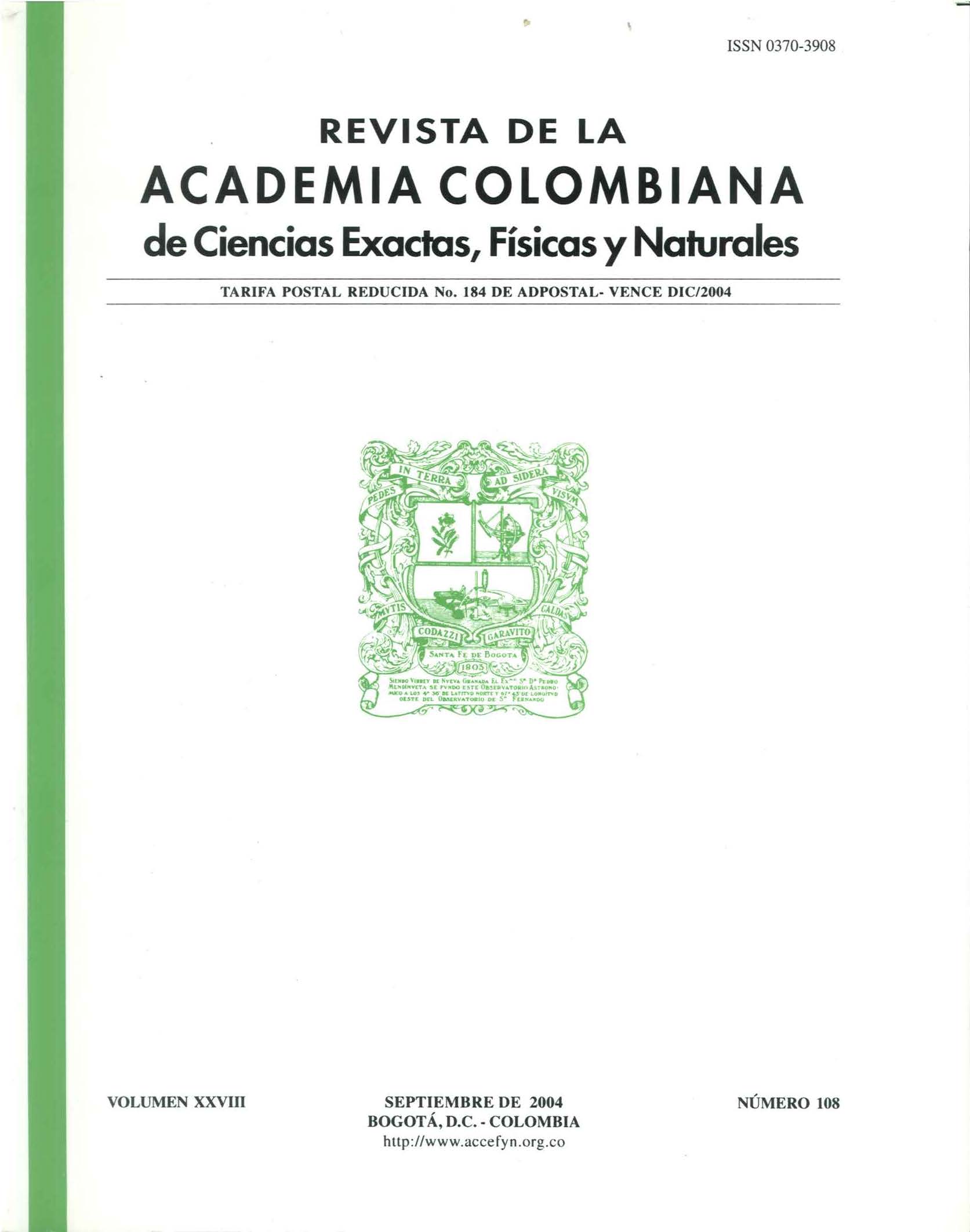Resumen
Por primera vez se analizan para la Sabana de Bogotá algunas de las características de la turbulencia y la estabilidad atmosférica como son: la escala de Monin – Obuckov, la temperatura de escala, la velocidad de fricción y el flujo de calor sensible de acuerdo con la teoría de similaridad de Monin – Obuckov. Debido a que esta teoría es poco conocida también se presenta la derivación de estos parámetros usando el método energético e igualmente la manera como estos parámetros pueden ser incluidos dentro de un modelo de dispersión. El cálculo de estos parámetros se llevó a cabo con ayuda de mediciones de la temperatura del aire a 2 y 10 m y del viento a 10 m. En general se destaca la relación entre el calentamiento diurno y el incremento de la turbulencia así: hacia las horas del mediodía y comienzos de la tarde se incrementan; la velocidad de fricción, el flujo de calor sensible y la inestabilidad atmosférica representada por valores negativos de la escala de Monin – Obuckov. A estas horas del día también se observa el máximo de la velocidad del viento. También se hace notoria la relación entre el incremento de la turbulencia y el desarrollo de la convección y formación de tormentas eléctricas en la Sabana de Bogotá. Durante las horas de la noche el viento se torna mínimo, el flujo de calor negativo y la escala de Monin – Obuckov positiva indican condiciones estables y neutrales. Estos resultados pueden ser de interés en estudios de dispersión de contaminantes atmosféricos. La relación encontrada entre la turbulencia y el desarrollo de la convección atmosférica, después de una confirmación más detallada, puede servir como un indicativo para el pronóstico de tormentas eléctricas en lugares donde no se poseen datos de radisondeo.
Referencias
Blackadar, A.K., 1997: Turbulence and diffusion in the atmosphere. Spring – Verlag, Berlin heidelberg New York, 185 p.
Bussinger, J.A., J.C. Wyngaard,Y. Izumi, & E.F. Bradley, 1971: Flux – profile relationships in the atmospheric surface layer. J. Atmos. Sci. 28, 181-189.
Feagle, R. G. & J.A. Bussinger, 1980: An introduction to Atmospheric physics. Sec. Ed., Acad. Press, Orlando Fla., 431 p.
Monin, A.S. & A.M. Obuckov, 1954: basics laws of turbulent mixing in the ground layer of the atmosphere. Trans. Gophys. Inst. Acad. Nauk, USSR, 151, p. 163-187.
Montoya, G & J.Eslava, (2000): Análisis de las condiciones que favorecen el desarrollo de la actividad convectiva y de las tormentas eléctricas en la Sabana de Bogotá. Geofísica. Colombiana., 4: 23-30.
Panofsky, H.A & J.A. Dutton (1984): Atmospheric turbulence. John Wiley & Sons, Inc. 397 pp.
Prandt, , L., 1925: Uber die ausgebildete turbulenz. Zeitschr. Fur angew. Math. U mech.,5, 136.
Pasquill, F. A. & F.B. Smtih, 1983: Atmospheric diffusion, 3rd Ed., Ellis Horwood, Ltd,437 pp.
Turner, D.B., 1964: A diffusion stability model for an urban area. J. Appl. Met. 3, 83-91

Esta obra está bajo una licencia internacional Creative Commons Atribución-NoComercial-SinDerivadas 4.0.
Derechos de autor 2023 https://creativecommons.org/licenses/by-nc-nd/4.0

